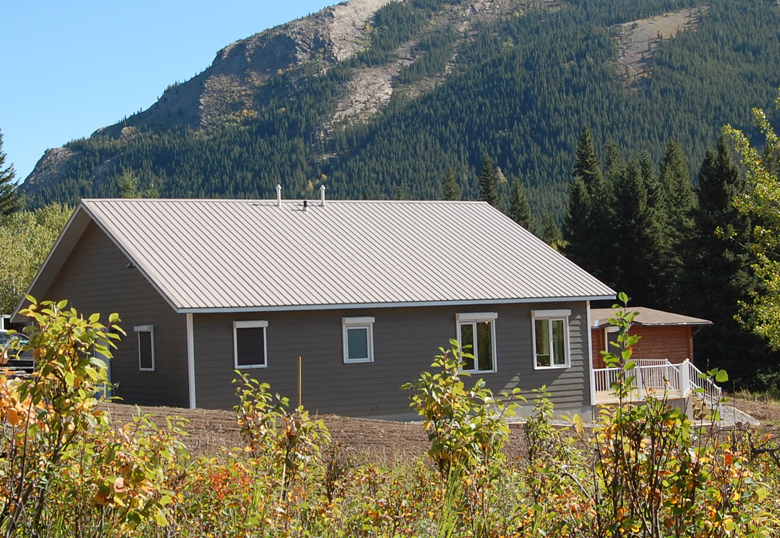The ability to conduct field work is essential to University of Lethbridge students who study topics like mountain snowpacks, changing tree lines and the cognition, behaviour and ecology of wild hummingbirds.
Christine (Michell) Mishra (BSc/BEd’10) called the U of L’s Westcastle Field Station home for two summers while she participated in three different research projects by Dr. Andy Hurly. The research examined hummingbird foraging behaviour to better understand the factors the birds used when they decided which flowers to feed from in an artificial flower patch.

“My experiences at the Westcastle Field Station, as well as other field work I did with other biology faculty, have really benefited me in my career as a high school science teacher,” says Mishra. “I often share stories from these experiences with my students, either to illustrate a point about a biological process, or just to let them know that science is not just something you do in the lab—it can take you to beautiful places and let you experience great things.”
The field station was renovated in 2016, with a second building added to provide dormitory facilities for 23 beds, an expanded kitchen, more lab space, exterior storage, water storage, a fire alarm system and better road access. The field station can now host numerous students and researchers and community outreach programs. The U of L supports the station by directing a portion of its Research Support Fund toward its operations.
Thomas Fox (BSc ’11), who also studied under Hurly, conducted research on wild hummingbirds and their ability to find the same flower time after time. They learned that hummingbirds primarily rely on landmarks close to the flower, although other factors can also play a role. Using the Westcastle Field Station as home base, the study was conducted over two consecutive summers.
“Having the field station as a resource was really great—it was like summer camp for scientists. Being out there gave me hands-on experience engaging with the scientific method in a beautiful setting,” says Fox. “Perhaps the most beneficial aspect for me was having the opportunity to live out there with graduate students and professors from all over the world. I really learned a lot getting to know all those brilliant people!”
David McCaffrey, who’s completing a Master of Science degree under the supervision of Dr. Chris Hopkinson, studies changes in the tree line in the Castle Wilderness Area southwest of Pincher Creek. While he sometimes camps when conducting his research, the U of L’s Westcastle Field Station serves as a launching point.
“As a base of operations and logistics hub, it makes a world of difference,” he says. “It provides us with a kitchen, lodging and a more research-focused atmosphere. I’m thankful to have the station there. I’ve been at a number of field stations around the world and the Westcastle Field Station is on par with any of them. It’s a really great facility.”
McCaffrey uses repeat photographs to study changes in the tree line. Some of the earliest photos come from surveys done more than 100 years ago. His research has revealed that whether a tree line goes up or down depends on topographic features like slope and aspect, which can affect the way the Castle area stores water. His work helps build understanding of long-term water resources in the Oldman River basin.
McCaffrey, and other geography students studying under Hopkinson, have also used the Westcastle Field Station as a base for LiDAR (light detection and ranging) surveys. LiDAR provides a high-resolution data set that allows researchers like McCaffrey to calculate the mass of the trees and, when compared with earlier images, the amount of carbon stored or lost.
Kelsey Cartwright, a Master of Science student under Hopkinson, conducts snow surveys in the mountains of the Oldman River watershed. Having an accurate measurement of the snow pack allows for better predictions of runoff and the potential for floods or droughts. Knowing more about the snowpack, locally and provincially, could help mitigate natural disasters and the costs that go with them. The Westcastle Field Station has provided a convenient mustering point for the work Cartwright has been involved in.
“We had a ton of equipment and tools to keep track of, which was easier to do at the field station than from tents and vehicles, as we did before the field station opened,” says Cartwright.
The Research Support Fund supports a portion of the costs associated with managing the research funded by the Canadian Institutes of Health Research, Natural Sciences and Engineering Research Council and Social Sciences and Humanities Research Council, such as salaries for staff who provide administration support, training costs for workplace health and safety, maintenance of libraries and laboratories, and administrative costs associated with obtaining patents for inventions.
